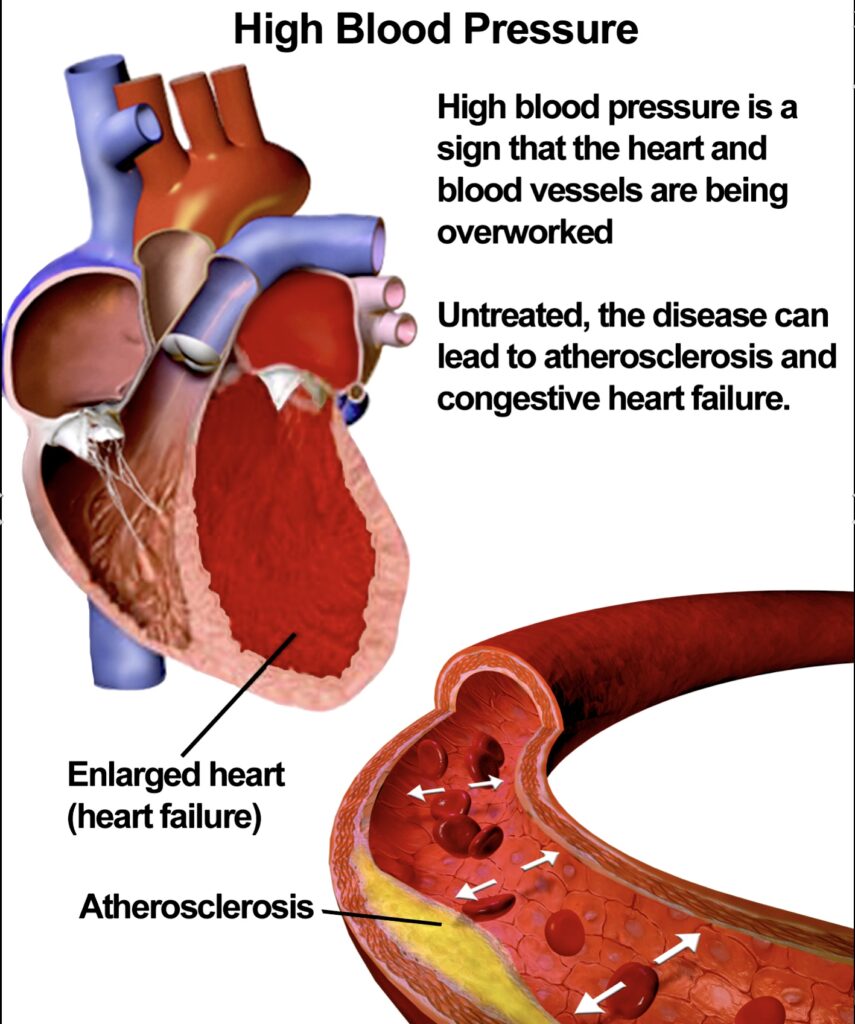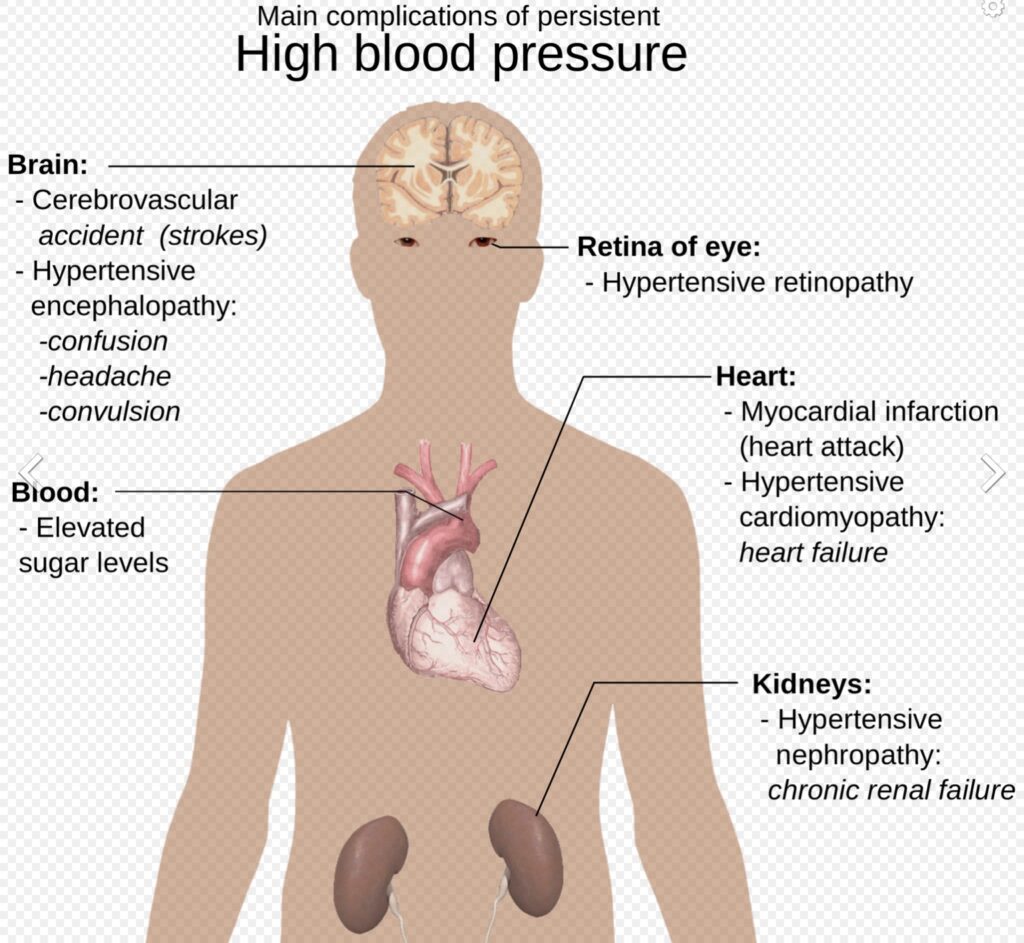Text and Photo by Henrylito D. Tacio
Graphics from Wikipedia
“High blood pressure runs in my family, so I was not surprised at all when my doctors put me on medication,” said Generoso Mortejo, a 35-year-old teacher. “I did, however, find it surprising that because of my age, even though the numbers showed that I had high blood pressure, they were reluctant to say I had it.”
Because of his family history, Generoso knew the dangers of elevated blood pressure. “I decided to take charge of my condition. I bought a monitor so I could check my blood pressure at home,” he said. “I had been told that my blood pressure was high because of the tension from my work, so I shouldn’t worry, but it was high at home, too. I knew that my condition was more serious than the diagnosis said it was.”
At Generoso’s next appointment, he discussed his condition in detail with his doctor. As they looked back over his chart and talked about the readings he had gotten at home, it became clear that he needed to go on medication.
“I was almost relieved,” he admitted. “I didn’t really want to be put on medication at such a young age, but I also didn’t want to suffer the consequences of not treating my condition.”
Generoso is just one of that 9% of Filipinos who know their condition. Studies have shown that 19% of those with hypertension, as the condition is known in medical parlance, are actually not aware that they have it, and these are the people that are most likely to suffer serious health problems.
“Practically nine out of 10 hypertensive patients have uncontrolled BP which make them good candidates to develop heart attacks and strokes, or literally drop dead before they could realize what was wrong with them,” said Dr. Esperanza Cabral, former health secretary and past president of the Philippine Society of Hypertension.
Hypertension affects around 14 million Filipinos, according to the Department of Health (DOH). “Two in every 10 Filipino adults, 20 years and over, are hypertensive,” the Food and Nutrition Research Institute adds.
The prevalence of hypertension in the country has considerably grown in recent years, and the need to address it should be more prioritized, according to the Philippine Heart Association – Council on Hypertension.

High blood pressure (From Wikipedia) 
Hypertension (From Wikipedia)
As lives become more sedentary and stressful and diets loaded with saturated fats become the norm, hypertension is now becoming a serious health problem in the country. In fact, health authorities consider it “a stubborn problem” as it involves so many of the body’s interlocking systems, and lying at the center of it all, is the heart.
Medical science tells us that blood travels through our body by flowing through arteries, carrying oxygen-rich blood from our heart to other tissues and organs. Once oxygen is delivered to our tissues and organs, oxygen-poor blood travels back to our heart through our veins. Our heart then pumps this blood into our lungs, where it is replenished with oxygen. After returning to our heart, the blood is pumped out into our arteries again.
The World Health Organization (WHO) sees blood pressure as “the force exerted by circulating blood against the walls of the body’s arteries, the major blood vessels in the body.” Hypertension happens when the blood pressure is too high.
“High blood pressure is not an illness in itself,” explained Dr. Robert Buckman, author of What You Really Need to Know About High Blood Pressure. Low blood pressure, or hypotension as it is called, is also not a medical problem. “By and large if your blood pressure is low, you are more likely to live a long, healthy life,” he said.
Blood pressure is written as two numbers. Dr. Willie T. Ong, chair of the Department of Medicine at Our Lady of Peace Hospital, defines high blood pressure as systolic pressure at rest that averages 140 mm Hg (millimeters mercury) or a diastolic blood pressure at rest that averages 90 mm Hg, or both.
An individual has mild hypertension if the systolic BP is between 140 to 159 mm Hg or the diastolic BP is between 90 to 99 mm Hg. When systolic BP is higher than 160 mm Hg or diastolic BP is greater than 100 mm Hg, a person is said to have moderate to severe hypertension.
Many things can cause blood pressure to go up and down. When we are asleep, our blood pressure is low because our body needs less oxygen-rich blood when it is at rest. On the other hand, when we are exercising, our body’s demands are greater, and so our blood pressure increases. “It is perfectly normal for your blood pressure to rise and fall in response to your body’s needs throughout the day,” said Ong, an internist-cardiologist.
Hypertension is known as a silent killer because of the lack of warning signs or symptoms, so much so that many people do not realize they are already hypertensive. “Most people with hypertension are unaware of the problem because it may have no warning signs or symptoms,” the UN health agency states. “For this reason, it is essential that blood pressure is measured regularly.”
When symptoms do occur, they can include early morning sickness, nosebleeds, irregular heart rhythms, vision changes, and buzzing in the ears. “Severe hypertension can cause fatigue, nausea, vomiting, confusion, anxiety, chest pain, and muscle tremors,” the WHO says.
The only way to detect hypertension is to have a health professional measure the person’s BP. “Having BP measured is quick and painless,” the WHO says. “Individuals can also measure their own BP using automated devices, however, an evaluation by a health professional is important for assessment of risk and associated conditions.”
Hypertension is a serious medical condition whose complications are often deadly if not corrected immediately. “Hypertension is the leading risk factor for heart attack, or myocardial infarction,” writes Dr. Julian Whitaker, author of Reversing Hypertension: A Vital New Program to Prevent, Treat, and Reduce High Blood Pressure.
“A heart attack occurs when part of the heart’s blood supply is suddenly reduced or cut off,” he continues. “The portions of the heart muscle that cannot get adequate oxygen and nutrients die. The more extensive the damage, the more serious the heart attack.”
Hypertension is also the primary factor underlying strokes and stroke-related deaths. “Too much pressure can cause the bursting of a vessel—especially if that vessel has been weakened by age and the excess pressure of hypertension,” explains Dr. Whitaker.
“Hypertension also contributes to atherosclerosis and arteriosclerosis, the narrowing and stiffening of the arteries that increases the likelihood of blood clots cutting off blood supply,” Dr. Whitaker points out. “When either of these scenarios occurs in an artery in the brain, the result is a stroke. There is a reduction in oxygen supply to that area of the brain, followed by cell degeneration and death.”
The health department reports that heart disease and stroke remain the leading causes of mortality, comprising 35 percent of total deaths among Filipinos. Philippine Health Statistics data show that in 2009, about 167,000 Filipinos died from heart disease and stroke. Half of these tragic deaths are likely related to high BP.
A lesser-known outcome of hypertension is memory loss and an increased risk of dementia and Alzheimer’s disease. “It is believed that hypertension’s adverse effects on the brain are caused by the relentless pounding on the small vessels in the brain,” Dr. Whitaker writes. The brains of patients with hypertension actually shrink – by as much as 20%, according to some studies.
There are also studies that show that hypertension accelerates the aging of the kidneys. High BP reportedly damages the arteries and arterioles that supply blood and nutrients to the kidneys. As these arteries become stiff and less elastic, the blood supply to the kidneys is reduced or, in some cases, cut off, causing damage to the kidneys themselves.
“Severe high blood pressure causes kidney malfunction over a relatively short period of time; however, even milder forms of uncontrolled hypertension can damage kidneys over several years, with no evident symptoms until severe damage has already occurred,” Dr. Whitaker claims. “Poorly controlled high blood pressure is responsible for approximately 25% of all cases of chronic kidney failure.”
The good news is: There is a wide range of drugs that your doctor can prescribe to bring BP down. The aim is to find the particular drug or combination of drugs that lower BP to a safe level and prevent problems.
“The doctor adapts treatment to you as an individual, so do not be surprised if you find that you are taking completely different drugs from someone else with the same condition,” Dr. Buckman wrote.
Dr. Ong says there are four classes of drugs available to treat hypertension. “Once you have started treatment, you must return to your doctor for regular blood pressure checks,” he reminds.
According to Dr. Buckman, different people respond to drugs in different ways. “Diuretics and beta-blockers used to be the first-line treatment for high blood pressure, but are less frequently prescribed today,” he writes. “Beta-blockers should never be stopped abruptly. The dose should be gradually reduced over several weeks.”
ACE inhibitors and calcium antagonists, when taken in combination, seem to have a protective effect on organs such as the kidneys, according to Dr. Buckman.
“Before leaving the doctor’s office, make sure you understand exactly what the drug has been prescribed for and what side effects can be expected,” Dr. Buckman advises. “Ask your doctor how many times a day you need to take the drug, and when and how it should be taken.”
But there are instances where a hypertensive person needs not to take medicines. “For some people, lifestyle changes such as stopping tobacco use, eating healthily, exercising regularly and avoiding the harmful use of alcohol, are sufficient to control blood pressure,” the UN agency says. “Reduction in salt intake can also help. For others, these changes are insufficient and they need prescription medication to control blood pressure.”
But hypertension can be prevented. Among the prevention methods, the WHO suggests are the following: reducing salt intake (to less than 5 grams daily or just a teaspoon), eating five serving of fruits and vegetables a day, being physically active on a regular basis (at least 30 minutes a day), avoiding the use of tobacco, reducing alcohol consumption (no more than one standard drink a day), limiting the intake of foods high in saturated fats, and reducing – if not eliminating – trans fats in the diet.
Managing stress also helps. “Manage stress in a healthy way such as through meditation, appropriate physical exercise, and positive social contact,” the WHO suggests, adding that managing other medical conditions is also a must.

